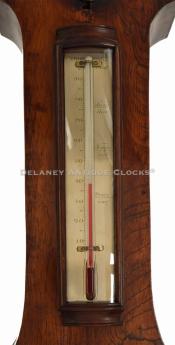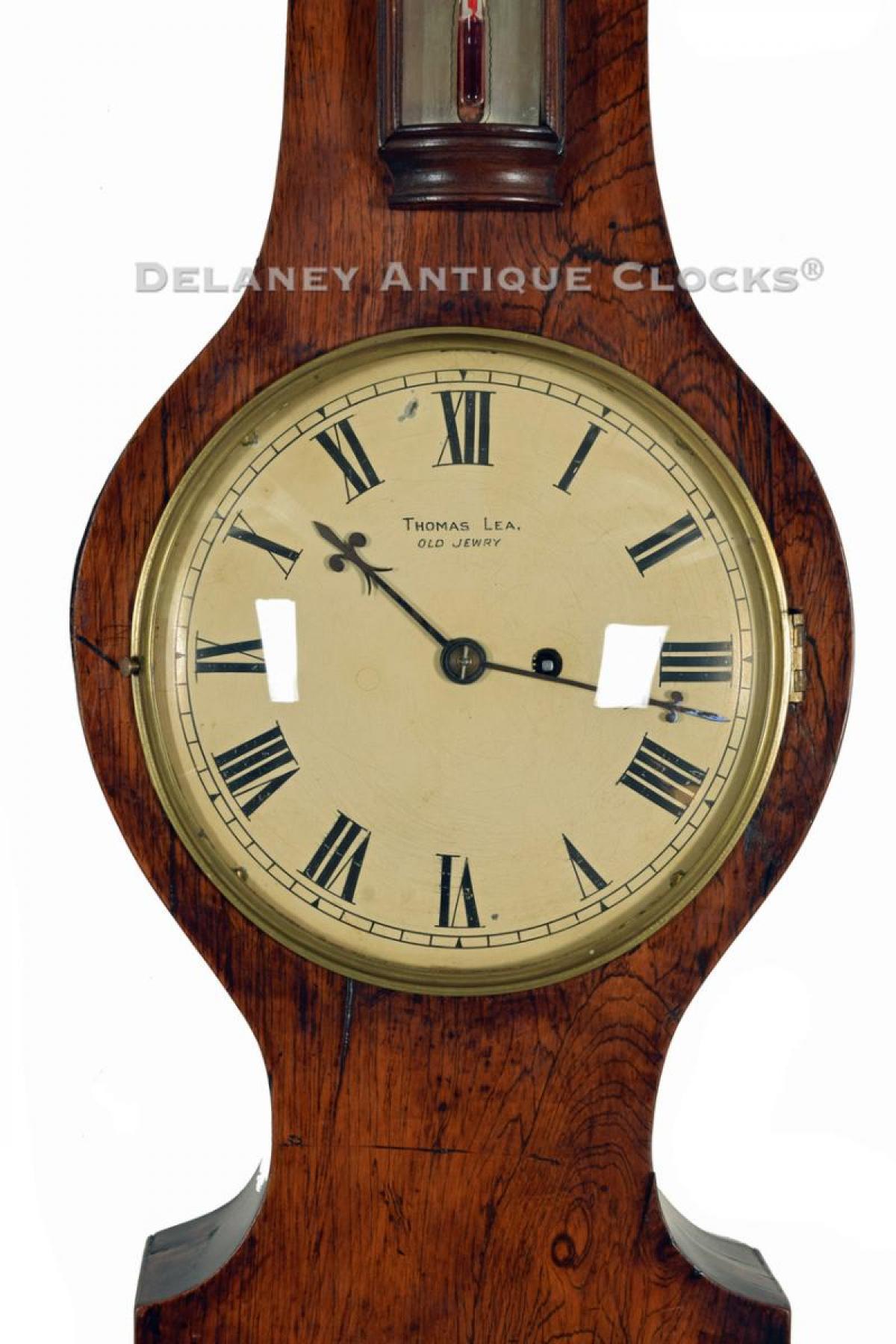Thomas Lea of Old Jewry, London. An oversized walnut-cased wheel barometer with an 8-day clock. 221171.
This very impressive wheel or banjo barometer features an eight-day clock in the case design. The dial of the clock is signed Thomas Lea / Old Jewry (London). Lea is listed as a member of the Clockmaker's Company during the period of 1764-1793. Old Jewry is now a one-way street linking Poultry to Gresham Street and is located in the historical financial center of London, England. This street is approximately 476 feet long and 20 feet wide.
This is a very large wheel barometer. The case measures approximately 56.5 inches long, 14.5 inches wide, and 4 inches deep. Large-scale barometers like this one seldom come to the marketplace. The case is a traditional form and features figured walnut veneers. The top is fitted with a nicely formed swan's neck pediment. The swan's necks are treated with an ebonized finish, and they center a single brass urn-shaped finial. Below this pediment is a hygrometer display. This theoretically measures humidity. This unit is designed to be portable and is secured in place by a brass spring clip. Below is an alcohol-based thermometer. This self-contained unit is also designed to be portable. It is encased in glass and framed with nicely shaped molding. The scale is Fahrenheit. The faceplate is engraved with the markers "Blood / Heat, Sumr / Heat, Tempe / rate, and Freez / ing" along with their numerical values. Below the thermometer is the clock dial. This painted iron dial is a convex form. It features Roman-style hour numerals and the Clockmaker's name and working location. It reads Thomas Lea / Old Jewry. The Fleur de Lys-shaped hands are well-formed and display the time. Behind the dial is the clock mechanism. This is constructed in brass and is of excellent quality. The long rectangular-shaped plates are supported by four brass pillars. The works are a spring-driven fusee design. It retains its original chain drive. This movement is designed to run for eight days on a full wind. The pendulum hangs from the back of the movement and the bob is brass-faced. Convex-shaped glass protects the dial. The glass is secured in a brass bezel that is hinged. This swings open to allow one access to the dial. The large dial below the clock is the barometer display. This brass display is decorated with engravings. It has been treated in a silver wash. The scale or dial information is fairly standard for this type of instrument. Two hands are necessary to read this instrument efficiently. The larger hand is connected to a brass wheel behind the dial. Inside the case, a silk cord is attached to a float and a counterbalance. This cords wraps around the wheel that is attached to the display hand. As the level of mercury in the tube changes, the float rises and falls with the mercury. This change is translated through the cord to the hand. The smaller brass hand is a marker and manually adjusts so that one can mark the position of the main hand each time the instrument is viewed. This is actuated with the bone knob located below the center dial. The dial is viewed through a convex piece of glass that is framed with a large brass bezel. At the bottom of the case is a level indicator. This is also decorated with engravings. Turn the case around and a long hinged door provides access to the j-tube and the clock mechanism.
This fantastic working instrument was made circa 1790.
221171








